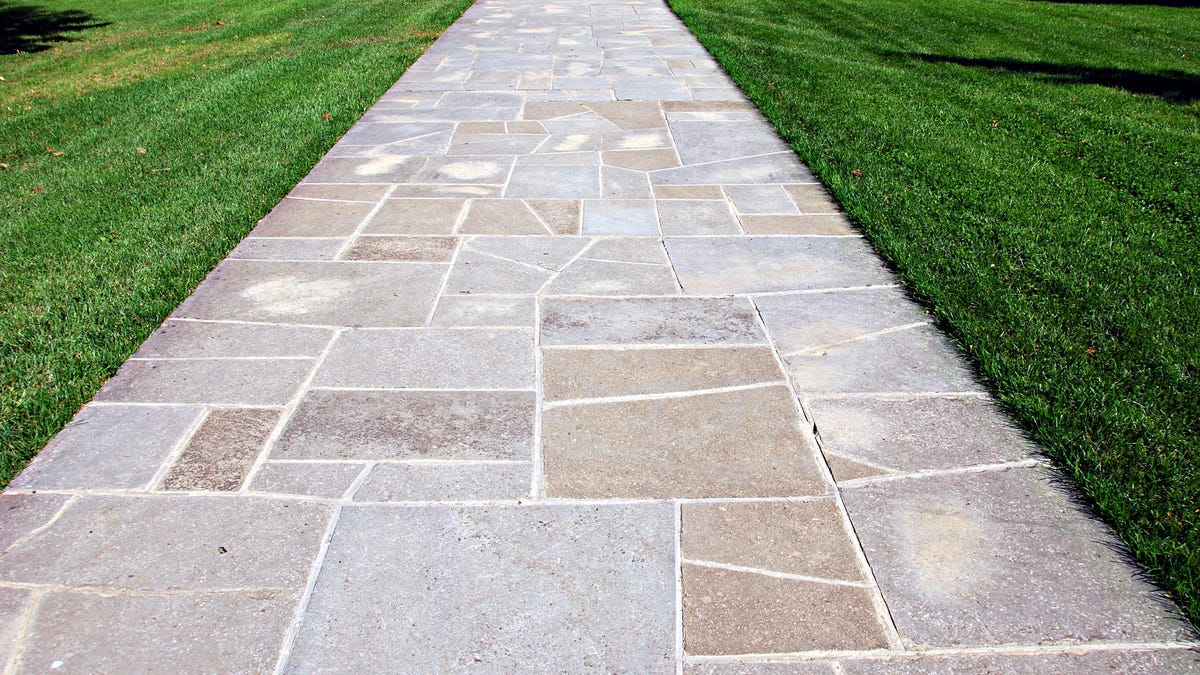
As the weather starts to change, cracks in stone and paver walkways can begin to be more of a problem. Moisture can work its way into any cracks in the mortar and when it freezes, it will expand, widening the cracks and potentially destabilizing the walkway. Before temperatures get below freezing on a regular basis, you can repair your mortar joints to prevent damage from winter weather. Here’s what you can do now to keep your walkways looking great all year long.
How to prepare your pavers to repair the mortar
Before you begin any repairs, the first step is to prepare the surface. Clear away any grass or weeds that have sprouted and use a high pressure blast from the hose or a pressure washer on the low or medium setting to get rid of stubborn roots and debris. If there is any loose mortar in between the stones or pavers, sweep that out as well. You can also use a stiff bristle brush to remove any bits from the cracks.
Allow the surface to air dry as much as possible before proceeding to the repair to avoid trapping moisture underneath and causing a longer dry time. This isn’t a good rainy-day project because rain will weaken and even wash away the new mortar and not allow it to cure properly. A little sprinkle isn’t a disaster, but a steady rain can ruin the job.
For this project, you’ll need:
How to repair mortar
Begin by using the mortar chisel and mini sledge to break away any loose mortar between the stones or pavers. This part is likely the most difficult and will take some time, but diligence here will prove important when you get to patching. Any place where the mortar is loose or coming apart, you’ll need to break it away from the pavers and remove it to give yourself a sturdy spot to attach the new mortar.
Next, mix your mortar and fortifier in your mortar tub or other container, following the instructions on the mortar package. Add only enough water to keep it sticky, but not enough for it to be at all runny. For larger jobs, you might need a bigger container to mix your mortar, so keep that in mind.
Fill your mortar bag and apply the mortar to the cracks between pavers just like you are frosting a cake. The mortar will be stiff enough to maintain a bead along the cracks if it’s mixed right. You should apply the mortar about one inch thick, and the bead should be just a little higher than the top of your stones. Make sure to wipe up spills or any excess right away before it starts to cure. Keep in mind that you will want to work in sections to avoid having the mortar dry out too much before you can work it into the cracks. Start with about a four foot section of walkway and then expand based on how quickly you can work so you can estimate the right amount of work time per section.
Using your brick trowel, flatten out the bead, pushing the mortar mix into the crack and smoothing out the top. Keep your trowel clean by rinsing it periodically in a bucket of fresh water, and remove any excess mortar, putting it back in your mortar tub.
After between an hour to an hour and a half, once the mortar is set enough to work like clay, or hold the impression of a fingerprint on its surface, tamp down the mortar with your pointing trowel, using enough pressure to squeeze it down into the crack a little farther. You can use your brush to smooth it out and remove any excess. Run your brush over the top of the mortar to create a smoothe, uniform surface.

Comentarios recientes